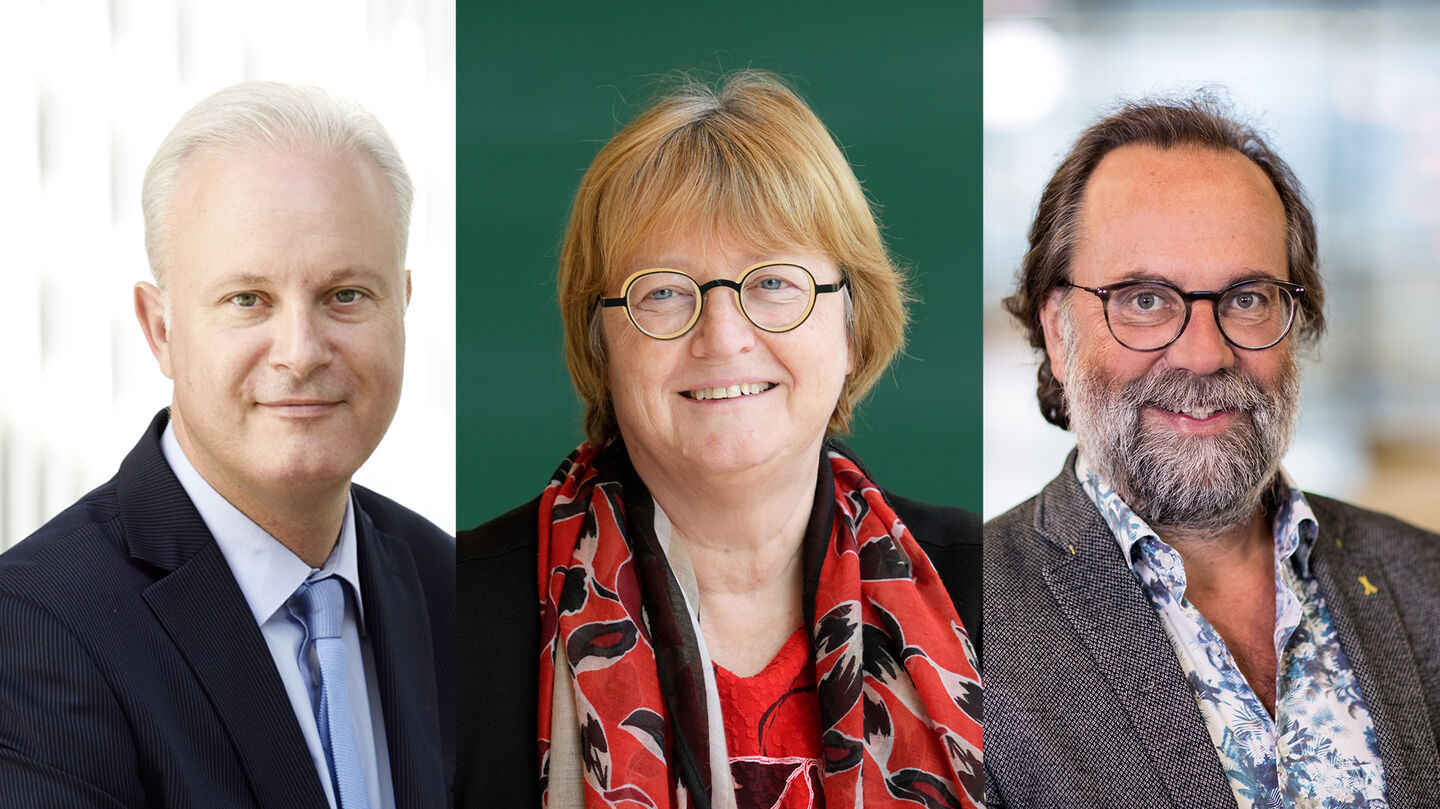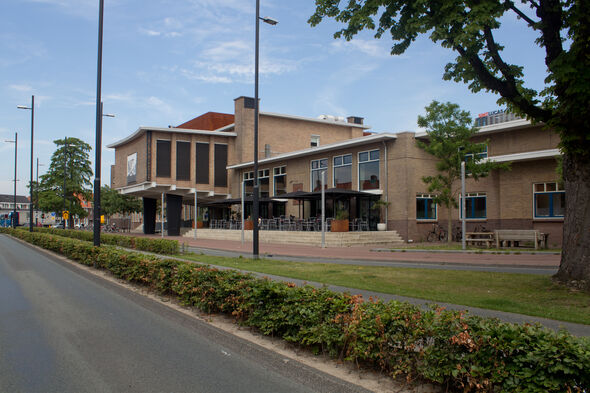
Former NatLab employees: legacy Holst still very much alive
Anything seemed possible at the NatLab, the Philips Physics Laboratory in Eindhoven. Researchers were given plenty of freedom and different disciplines worked closely together. At the heart of this culture was the philosophy of first director Gilles Holst, which three former employees – Maarten Steinbuch, Ingrid Heynderickx, and Clément Goossens – believe is still highly relevant today.
Almost every time he gives a presentation, full professor Maarten Steinbuch (on the right on the main photo) shows a slide with Holst’s Ten Commandments. “Take number three,” he says, pointing at the screen: “Give employees plenty of freedom and accept their peculiarities. Brilliant.” It might not be what you’d expect from a corporate research lab, but researchers at the NatLab were given a lot of room for creativity, as full professor Ingrid Heynderickx also remembers. “It was a kind of sanctuary governed by Holst’s rules. Let people do their own thing. Give them space, and brilliant ideas will follow.”
The approach worked. One technology after another emerged from the research lab and then reached the general public via the production lines – from the CD to flat screens and radio technology. The lab was also the birthplace of ASML and NXP. “From the creation of the NatLab up until the 1990s, virtually all technological knowledge that was developed there ultimately translated into a successful product,” says Clément Goossens, who worked for many years as a project coordinator at the NatLab and is now responsible for Public Affairs & Community Engagement at TU/e. “So the attitude really was: feel free to do fundamental research.”
Theoretical research
It was during his time at the NatLab that Steinbuch wrote his most theoretical publications. And nowhere else did Heynderickx ever experience the same level of freedom she had at Philips – not even at the university. “At the university there is room for free research, but you also see that grants and impact requirements steer what we do.” To some extent, the government does allow the university to carry out curiosity-driven research, but according to Goossens that freedom is more limited than it used to be. “Look at our second funding stream: the money you apply for from the Dutch Research Council (NWO) often comes with a required valorization section.” He believes that knowledge purely for the sake of knowledge has become harder to fund than it was in the past. “I think that’s a shame.” Within the NatLab itself, however, that space also gradually diminished over the years, Heynderickx noticed, because everything at Philips increasingly had to be tied to a product or business case.
Another reason there was less and less room for free research at the NatLab, Goossens says, is that radical innovation has simply become more difficult. “Systems are becoming increasingly complex. Take ASML’s machines: innovation there is mostly incremental – small steps forward based on existing applications.” There is still a central Philips Innovation Centre, but the NatLab itself, according to Steinbuch, is gone for good. With the decline of industrial research labs, he feels it is now up to the university to serve as the “long-term conscience” of both industry and society.
Crossing disciplinary boundaries
The divisions that existed within Philips in the NatLab era no longer exist, at least not in the same form, Goossens explains. “They’ve become separate companies. And now the university actually collaborates with these companies again. In fact, we do so in a way that’s quite similar to the NatLab: in projects with industry, people from different disciplines within TU/e come together.” That is another one of Holst’s commandments that the former employees often mention: multidisciplinary collaboration. “Don’t organize a laboratory along disciplinary lines, but form multidisciplinary teams. He wrote that a hundred years ago!” Steinbuch says.
It is something Heynderickx tried to foster herself during her time as dean of Industrial Engineering & Innovation Sciences (IE&IS). “Back then I very consciously defined four themes for the entire department – broader research themes. These were meant to be multidisciplinary cores.” That did not mean that everyone in the department was required to join, she stresses. Because if you want to collaborate well across disciplines, you also need people with deeper expertise in their own field.
At the university, Steinbuch notes, collaboration across disciplinary boundaries is already happening within the institutes and student teams. With the concept of the fourth-generation university that he introduced at TU/e, he hopes to contribute too. “It means: working together in a multidisciplinary way across group boundaries, embracing open innovation, and bringing the outside world in. That’s exactly what we did at Philips.” In doing so, he believes, the university should focus on pressing societal challenges, such as the future of water, nitrogen emissions, climate adaptation, low literacy, and long-term care.
Triple helix
According to Goossens, TU/e’s doors for this kind of collaboration have increasingly opened. “The university is moving toward making more impact and collaborating more with the outside world, especially with companies.” In his view, TU/e is one of the best universities in the world when it comes to working with industry. Brainport also plays an important role in this. “Shaping what we call the triple helix collaboration – between the university, government, and industry – and putting it into practice has, I think, been driven to a large extent by people from Philips.”
The NatLab created a huge network of employees. First mainly within Philips itself, as the lab attracted young PhD candidates and within a few years helped them move on to the production lines. According to Steinbuch, this was a deliberate strategy, one he later applied at the university as well. “That’s why I don’t have full professors all over the world who came out of my group – like Bert Meijer has, for example. The people I supervised mostly work in industry, because I kept encouraging them: go out there and explore.” As a result, he now has an extensive network in the corporate world.
Later, people from Philips – including from the NatLab – spread out across the region. They now work at the university, at Brainport, at ASML, and at other (tech) companies. Together they still form a vast network of people who all speak the same “language.” According to the former employees, there is no secret Philips society. But there is, Steinbuch says, a certain mutual understanding among former NatLab people when they run into each other. “If you’ve worked there, you will never forget it.”
On Thursday, November 21, the annual Holst Memorial Lecture will take place, with this year’s theme of quantum sensing. After several presentations on that topic, physicist Jörg Wrachtrup will conclude the event with the Holst Lecture and will receive a special award for it.
This article was translated using AI-assisted tools and reviewed by an editor.


Discussion